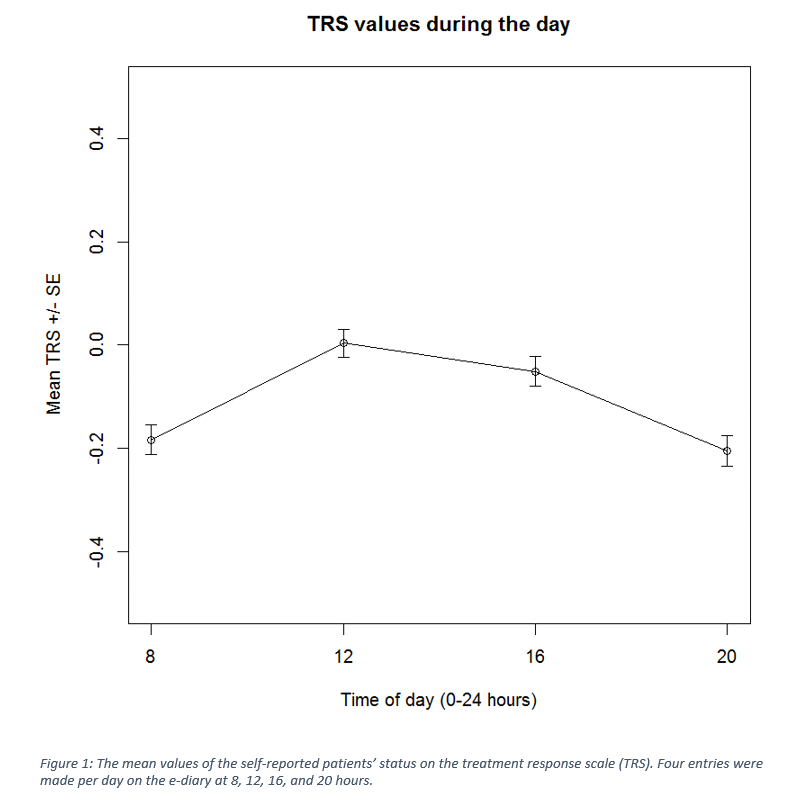Session Information
Date: Saturday, October 6, 2018
Session Title: Parkinson’s Disease: Clinical Trials, Pharmacology And Treatment
Session Time: 1:45pm-3:15pm
Location: Hall 3FG
Objective: The goal of this project is to examine if there is evidence to suggest that there is a difference in response to levodopa during the day in patients with Parkinson’s disease (PD).
Background: Advanced PD patients are efficiently treated with continuous administration of levodopa-based formulations. These formulations allow for stable levodopa plasma concentration. The only available continuous administration formulation so far is the Levodopa-carbidopa intestinal gel (LCIG). The patients’ response to dose administration is often evaluated in the treatment response scale (TRS), with low values (from -3 to -1) of the scale pointing to bradykinesia and high values (from +1 to +3) to dyskinesia. It is suspected that some patients or a sub-group of patients have lower TRS values in the afternoon hours.
Methods: In Memedi at al. (2015), 59 patients that were using LCIG were recruited and used an e-diary at home. They self-reported their motor function on the TRS scale using the e-diary 4 times per day, at 8, 12, 16, and 20 o’clock. In each entry they evaluated their momentarily status. Student t-tests for comparison of means of TRS values between the different times of the day were applied.
Results: When comparing the population self-reported values statistically significant difference was found between the 12 o’clock and the 20 o’clock entries (p-value < 0.001), with differences in means of about 0.2 on the TRS. The results are graphically presented in Fig. 1. At the 8 o’clock entries the patients have not reached full effect in many cases, explaining the low TRS value at that point.
Conclusions: The results suggest that, based on self-reported outcomes from patients being treated with LCIG, the levodopa effect regressed in the evening hours. A small increment in dosage during the day may thus be considered in some patients. Future work should focus on identifying if there is a sub-group of patients that require higher doses in the afternoon and if the patients of that group share common characteristics.
References: Memedi, M., Nyholm, D., Johansson, A., Pålhagen, S., Willows, T., Widner, H., … & Westin, J. (2015). Validity and responsiveness of at-home touch screen assessments in advanced Parkinson’s disease. IEEE journal of biomedical and health informatics, 19(6), 1829-1834.
To cite this abstract in AMA style:
I. Thomas, M. Memedi, D. Nyholm, J. Westin. Does the effect of continuous levodopa infusion treatment for Parkinson’s disease regress as the day progresses? [abstract]. Mov Disord. 2018; 33 (suppl 2). https://www.mdsabstracts.org/abstract/does-the-effect-of-continuous-levodopa-infusion-treatment-for-parkinsons-disease-regress-as-the-day-progresses/. Accessed January 5, 2026.« Back to 2018 International Congress
MDS Abstracts - https://www.mdsabstracts.org/abstract/does-the-effect-of-continuous-levodopa-infusion-treatment-for-parkinsons-disease-regress-as-the-day-progresses/

